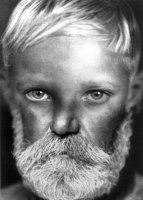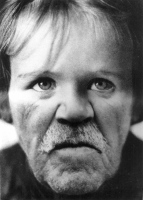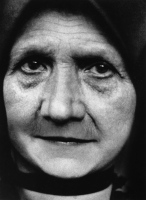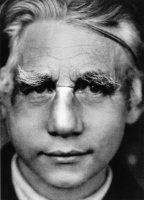-

Deconstructing Erna Series of 11 b/w prints on baryta paper, 70 x 50 cm each, 2015



Erna Lendvai-Dircksen (1883–1962) became well-known in the 1940s for a series of photo volumes titled „Das Deutsche Volksgesicht“ [The Face of the German Volk]. In search of a „collective Volkheit“ she travelled the German Reich as well as occupied territories such as the North of France, Norway, Denmark, the Tyrols, Vorarlberg and Flanders to portray people, mostly farmers, in whose faces she believed to recognise the traces of „Germanic blood“.
„The song sounds on and on. The restless, reluctant haemal turbulences of blending have become rhythms in steadily progressing nucleation: tribal islands of pleaded German Volkheit.“ (From Erna Lendvai-Dircksen’s prologue in: „Das Gesicht des deutschen Ostens“ [The Face of the German East], 1935).
Portraits from various volumes of the photographer are the point of departure for Deconstructing Erna. In this series, I make a non serious attempt to take so-called „racial ideology“ seriously: What would it look like if a certain kind of people would only breed among themselves, thus without „haemal turbulences“?
In 1958, Erna Lendvai-Dircksen was awarded the David-Octavius-Hill medal by the „Gesellschaft Deutscher Lichtbildner“ [Association of German Photographers]. In the 1970s, her work received increased interest again. Showing an escapist approach similar to that of Leni Riefenstahl, who at the end of her life devoted her work exclusively to underwater photography, Lendvai-Dircksen dedicated her last photo volume to the „primordial form“ of the Danish coast. She died in 1962 without ever having repudiated from National Socialism’s racial ideology.
(translated by Jeanette Pacher)